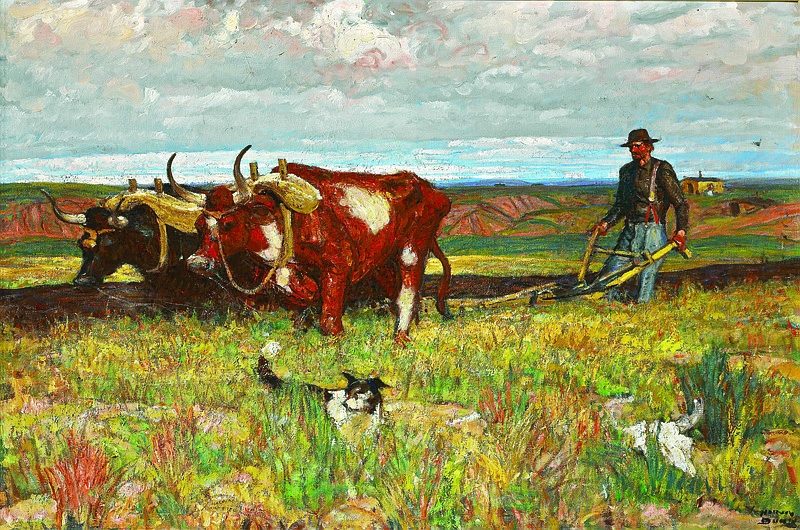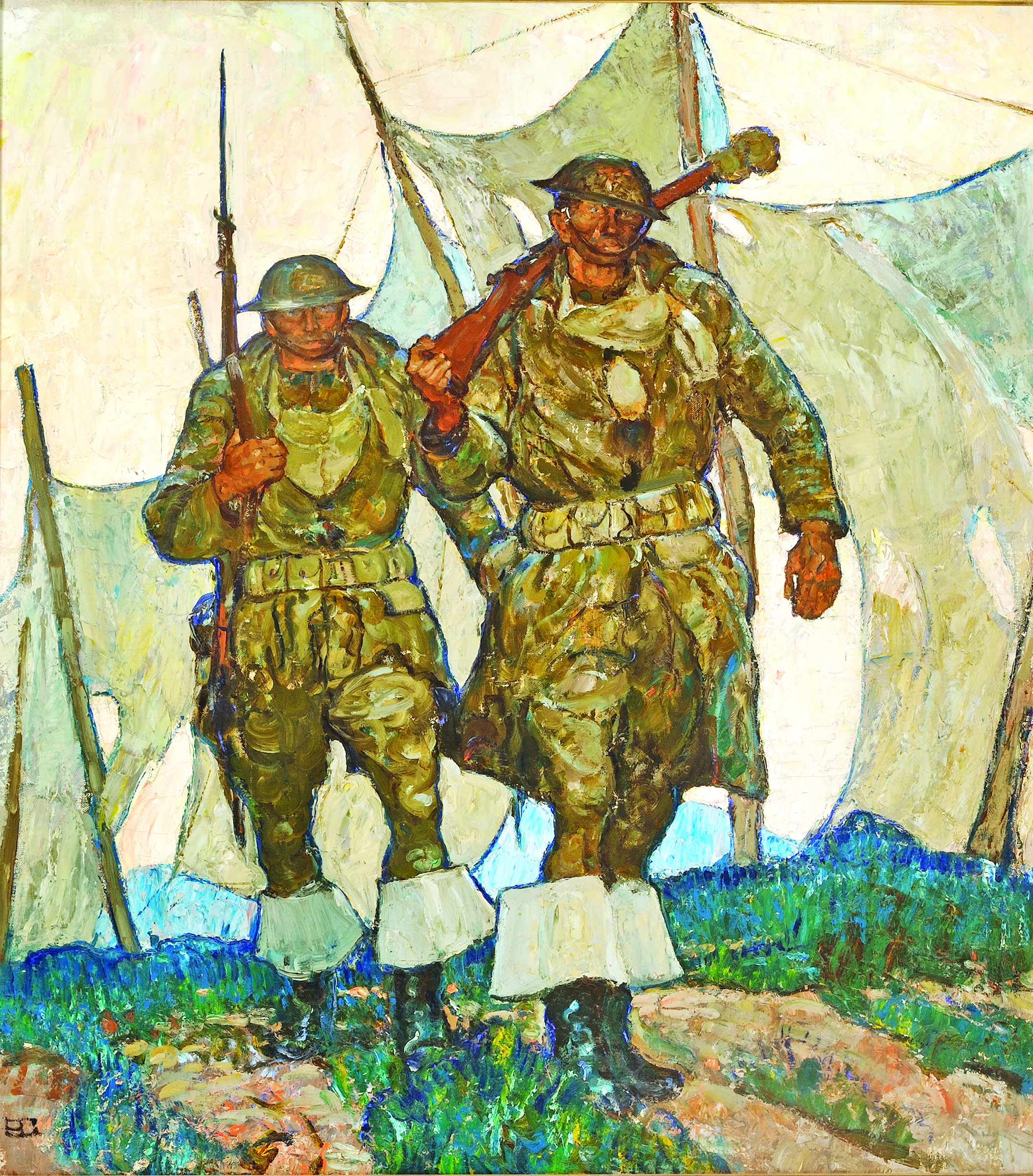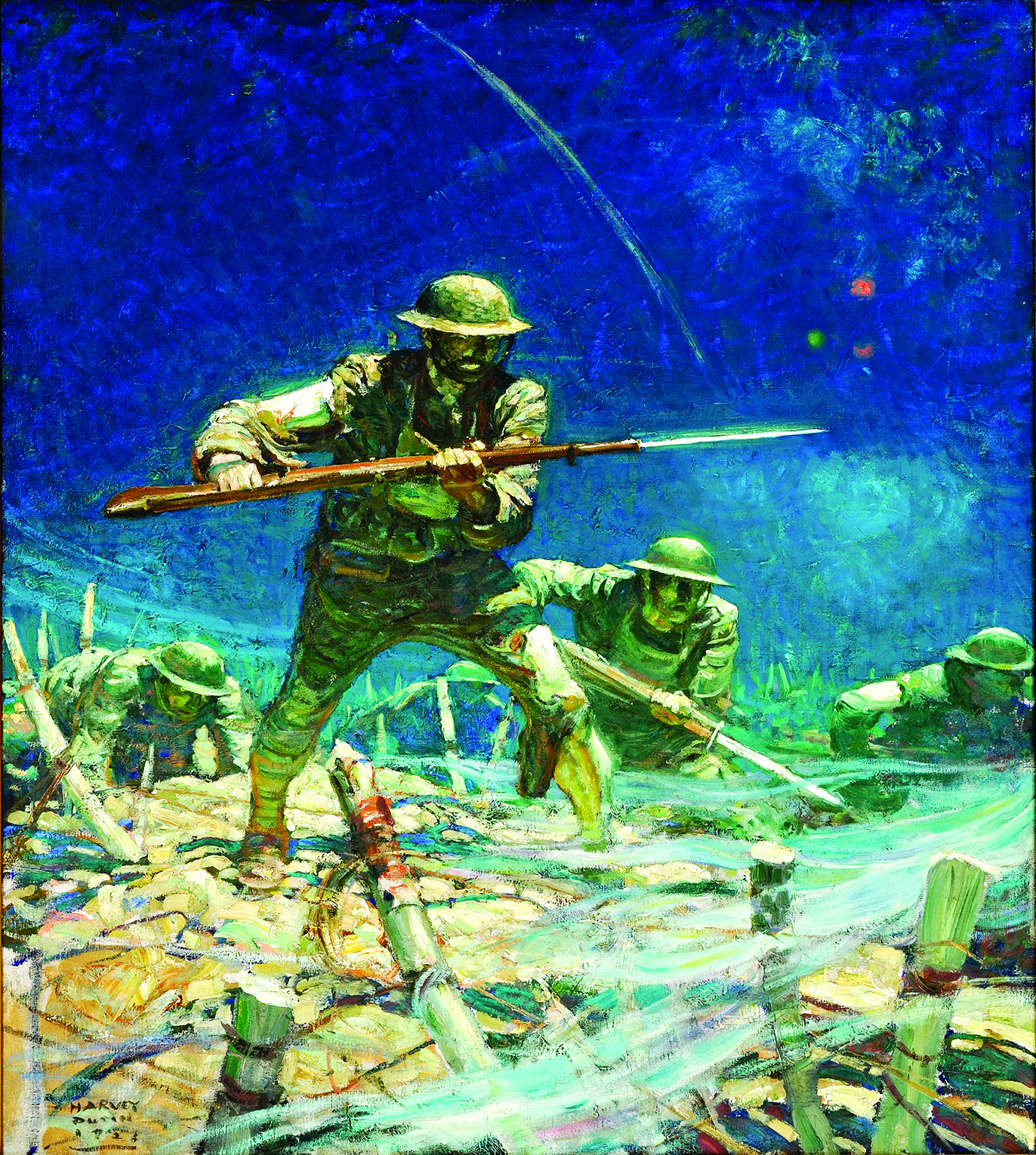If you go
› What: Masters of the Golden Age: Harvey Dunn and His Students› When: Through Oct. 2:› Where: Hunter Museum of American Art, 10 Bluff View› Hours: 10 a.m.-5 p.m. Monday, Tuesday, Thursday, Friday & Saturday; noon-5 p.m. Wednesday and Sunday› Admission: Free for members, $15 for adult nonmembers and free for youth under 17› Information: huntermuseum.org, 267-0986
These days, TV, computers and smartphones easily bring the entire world - and part of the universe - to us, but 100 years ago or so, people relied on storytellers, photographers and illustrators to bring in far-away places.
Harvey Dunn was one of those illustrators and the Hunter Museum of American Art is celebrating his work in an exhibit called "Masters of the Golden Age: Harvey Dunn and His Students."
The 80-piece exhibition features works by Dunn, who died in 1952, and also those by some of his more renowned students, including Dean Cornwell, Henry C. Pitz, Mead Schaeffer, John Clymer and Harold von Schmidt.
Dunn's illustrations graced covers and accompanied stories in periodicals like Scribner's, Ladies' Home Journal, Harper's, Collier's Weekly and the Saturday Evening Post, where he did more than 350 covers. His subject matter ranged from battle scenes in World War I to family scenes in Africa to life on the prairie in his home state of South Dakota.
"He brought the world to people," says Stephanie Haboush Plunkett, deputy director and chief curator of the Norman Rockwell Museum in Stockbridge, Mass., which organized the Hunter exhibit.
Some of Dunn's illustrations were stand-alone covers and some accompanied feature-length stories, she adds.
"These were long-form, like short novellas," she says.
In the early part of the 20th century, when Dunn was doing most of his work, it was the job of illustrators to give readers a visual image of the person, location or the overarching theme of the subject matter.
"The pieces are representations of the way that Americans saw their lives at that time and the way they sort of envisioned their lives," said Cara McGowan, director of marketing and communications at the Hunter.
The collection also features some of Dunn's large oil-on-canvas paintings. They range in size from 2-by-3 feet to 4-by-5 feet. Illustrators of the day were aware of the constrictions of having their works reproduced on a magazine cover and had to consider such elements as sharpness and color reproduction.
"Illustrators knew they had about three seconds to get the reader's attention and decide if they would buy the magazine," Plunkett says.
Dunn was very fast and very prolific in his work, reportedly having painted 55 pieces in 11 months during one stretch.
"He was also a celebrity of his day. People knew his work," Plunkett says.
Contact Barry Courter at bcourter@timesfreepress.com or 423-757-6354.
Coming In September
Thursday, Sept. 1 at 6 p.m.Art Wise: Distinguished Speakers Series Presents Elizabeth AlberdingElizabeth Alberding, curator of the Kelly Collection, will discuss the works of Harvey Dunn from the Kelly Collection, one of the primary lenders to Masters of the Golden Age: Harvey Dunn and His Students. This talk is offered to the public at the throwback price of $5 adults (free for members and children under 17 with paying adult).Thursday, Sept. 15, 6-7 p.m.Art + Issues: Illustrating America Then and NowPulitzer Prize-winning Chattanooga Times Free Press editorial cartoonist Clay Bennett will choose a single work from museum’s special exhibition and use it as a springboard to explore how we illustrated our nation’s culture then and now. All Art + Issues events are free and open to the public.Thursday, Sept. 22, 6-7 p.m.Beyond an illustration: Meaning and Memory through the work of Harvey Dunn and His StudentsUTC literature professors Heather Palmer and James Arnett and Hunter Museum staff will lead a participatory gallery discussion exploring the imagery of Dunn’s America and its meaning in the context of the America of his day.Free to members and open to all with regular admission.


